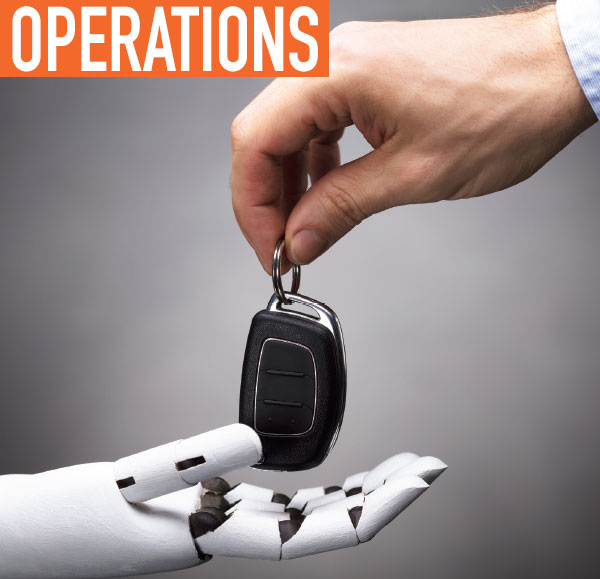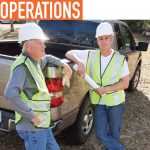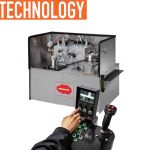The implementation of autonomous transportation over the past few years is a revolution that is completely changing the world we live in. As a truck accident lawyer, I have worked on every kind of auto accident imaginable and am fascinated to see what changes my business will endure with self-driving technology.
To see companies succeed in taking humans out of the driver’s seat is astounding. It’s reasonable to assume that our roads and means of transportation will be completely different in 10 years’ time, so how will the work truck industry, namely the delivery segment, adapt to these radical changes in technology?
ON THE HORIZON
Right now, there are dozens of companies competing to create the best autonomous vehicles. Of the dozens of companies, Tesla has been one of the leading names in the development of the cars of the future, now the electric auto mogul wants companies to start trucking with it.
Last November from an airplane hanger in California, Elon Musk, CEO of Tesla, stepped out of his newly assembled semi-truck and wowed Tesla fans all over the world. The Tesla semi won’t be on the market for a few more years, but it will be a game-changing advancement for the transportation industry and US commerce. Musk boasts this truck as a cheaper, safer, and more luxurious alternative to diesel trucking.
There is progress toward driverless transportation as we move away from diesel, but will all this advancement come at the cost of the American driver? It’s true that work truck drivers, bus drivers, and taxi drivers will eventually bear the brunt of the autonomous driving revolution; however, these changes are years away from mainstream.
WHERE DO YOU FIT
While the outlook for the future of drivers may be interesting, the truth is that the industry is not going anywhere. There will always be a demand for drivers and transportation industry professionals in this country. The autonomous driving wave signals the beginning of a transitional period for the industry, not the end of it. There will always be a need for human involvement, no matter how smart a vehicle can be on its own.
Some studies show that the addition of self-driving vehicles will actually increase job demand across the industry. A study done by Uber’s Advanced Technology Group concluded that for all the advancements brought along by self-driving vehicles, there will be plenty more opportunity elsewhere in the industry. Most self-driving projects are primarily focused on long haul trips, and the demand for short haul drivers will increase significantly. The study claims that in the next 10 years there will be demand for 766,000 new driving jobs.
Aside from the revolution on the highways, there are plenty of other self-driving projects that could be hitting city streets soon. Delivery is the next field that will be heavily affected by autonomous driving within the next few years.
IN THE INDUSTRY
A Toyota vehicle called e-Palette is like a ridesharing platform for delivery packages. Toyota is teaming up with Amazon, Uber, and Pizza Hut to create a bus-looking delivery service that drives itself. The idea is that the store comes to you, no matter what you are buying. The e-Palette is not a finished product but rather a concept that is projected to be ready for testing by 2020.
Ridesharing is a massive industry in the US, and now the shift is for companies to create autonomous ridesharing vehicles. In the early days of autonomous driving, taxicabs were the industry that companies looked to go after because that was where businesses saw the most profitability. The same is now true with delivery, and specifically, pizza delivery. Ford is teaming up with Dominos, Toyota is partnering with Pizza Hut, and the race to create the best autonomous pizza delivery vehicle is on. Several years ago pizza companies were exploring the use of drone delivery, but now autonomous driving is the way to go.
WHAT’S TO COME
The driving factor behind all of this is profitability. Yes, it’s neat and futuristic to hitch a ride from a robotic vehicle or receive a package from an automated bus, but the businesses are only focused on how much autonomous driving affects their bottom line. Many people think that commerce is first in line for fully autonomous vehicles, and then passenger cars will come next. It seems that the industry is getting crowded with dozens of companies trying to make the best self-driving vehicles.
There are tremendous changes happening to the way we get around. Tesla showcased a very exciting new product, but it’s not even on the market yet. Delivery vans will be a benchmark of autonomous driving, but there is a long way to go.
The future of driving may be in question, but there is really no need for drivers to panic about the loss of a career. Every industry has been affected by new technologies at some point in time. Autonomous driving will bring major changes to work truck and delivery businesses, but will never be able to make the driver obsolete.
ABOUT THE AUTHOR
Jared Staver is a personal injury lawyer based out of Chicago, Illinois, and is the managing partner of Staver Law Group, PC. Jared focuses primarily on car and truck accident injury cases and has nearly twenty years of experience within the Illinois legal industry. Find out more, visit www.chicagolawyer.com.
MODERN WORKTRUCK SOLUTIONS: MAY 2018 ISSUE
Did you enjoy this article?
Subscribe to the FREE Digital Edition of Modern WorkTruck Solutions magazine.
![]()




